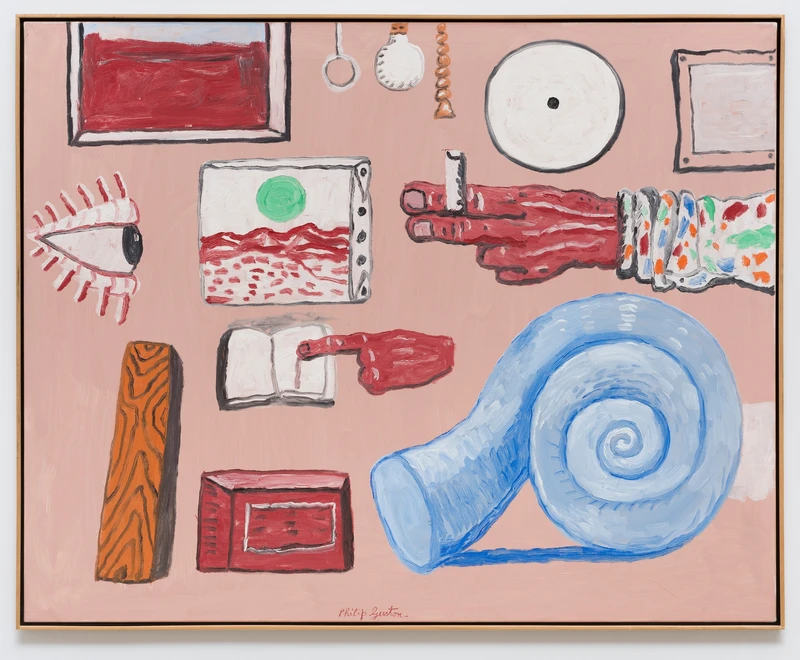Philip Guston


b. 1913, United States
d. 1980
Born in 1913 in Canada of Ukrainian-Jewish parentage, Guston and his family moved to America while he was still a child. The persecution of his parents in their homeland, the Ku Klux Klan activities they witnessed in California and his father’s suicide were all absorbed into his developing artistic practice, emerging as powerful motifs in his late, signature canvases.
In 1927, Guston enrolled at the Los Angeles Manual Arts High School and later the Otis Arts Institute, at the same time producing public murals which demonstrated both his love of Mexican muralism, and his strong political and social conscience. In 1936, he moved to New York where he developed his interest in philosophy, poetry and the work of the Renaissance painters. He also held teaching posts at, among others, the New York University and the Pratt Institute.
Guston’s work first came to prominence in the 1950s, by which time he was an important member of the Abstract Expressionists. His enquiries into the fundamentals of painting: the importance of the brush stroke and compositional structure are viewed retrospectively as his most important contribution to the movement.
During the late sixties, Guston became frustrated with the limitations of abstraction and returned to painting figuratively, amassing a potent language of motifs influenced in style by comic book artists such as Robert Crumb and George Herriman, and in content by personal and political concerns. The first exhibition of these works opened in 1970 at the Marlborough Gallery in New York and was publicly and critically savaged, causing the artist to leave New York for Woodstock where he remained until his death in 1980.
During this last decade, Guston continued to explore how he might achieve the ‘wholeness’ between thought and feeling that he remembered experiencing as a child. Klansmen, nooses, bricks and a single illuminated light bulb were assembled on the canvas in non-hierarchical structures that sought to articulate the absolute essence of painting, its very origins, and his fears for what he saw to be a brutal, degenerating world. Intensely personal yet universally relevant, his work gradually became sought after, championed within his own lifetime, and growing in stature and influence since his death.
Guston’s work features in numerous public collections worldwide including the Art Institute of Chicago; Carnegie Museum of Art, Pittsburgh; Solomon R. Guggenheim Museum, New York; Centre Georges Pompidou, Paris; Centro de Arte Reina Sofia, Madrid; Kunstmuseum Winterthur, Switzerland; National Gallery of Art, Ottawa; National Gallery of Victoria, Melbourne; Tate, London; and the Stedelijk Museum, Amsterdam, The Netherlands